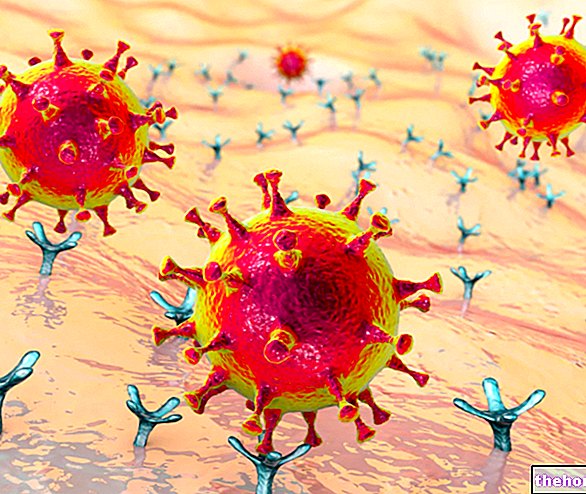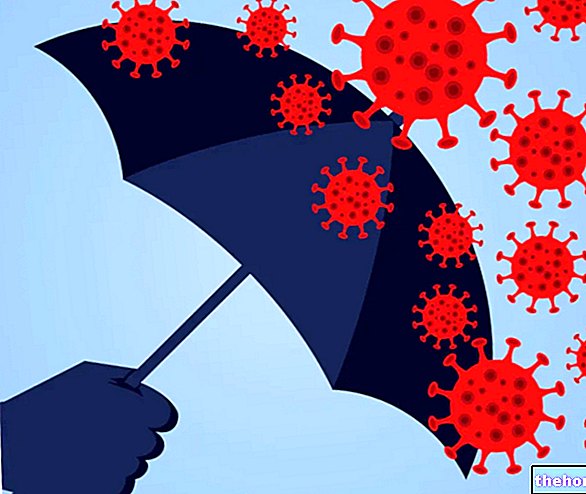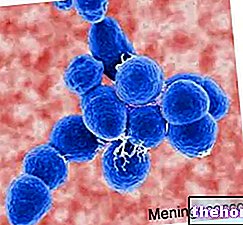Generality
The term amoebiasis identifies a generic presence of the parasite Entamoeba histolytica inside the organism; this presence can be substantially asymptomatic and harmless, and in this case we speak of commensal amoebic infection, or produce tissue lesions accompanied by severe symptoms, first of all dysentery. In the latter case we speak of amoebic disease.

Epidemiology and Contagion
It is estimated that around 10% of the population worldwide harbor species of Entamoeba; in most cases this infection is sustained by the species E. dispar (harmless), while only one in ten cases is associated with the potentially pathogenic species Entamoeba histolytica. The latter, in turn, generates amoebic disease in about 10% of cases each year.
The spread of the disease is favored by poor hygienic conditions and hot humid climates; so, if in the United States of America about 4% of the population hosts such a parasite in their intestines Entamoeba, in some developing countries this percentage can exceed 30%. Within the same population, homosexual males (due to the greater risk of contagion) and immunocompromised subjects (due to the decline in immune defenses, eg seropositive, malnourished or patients treated with immunosuppressive or antineoplastic) are more exposed to the risk of amoebiasis. ). In the latter case, the risk of commensal infection evolving into amoebic pathology is also greater, similarly in the extreme ages of life, during pregnancy and breastfeeding.
As anticipated, the transmission of amoebiasis can occur sexually, following oral-anal and oral-genital contacts (it is therefore part of sexually transmitted diseases). However, the most common route of transmission is the fecal-oral one. , therefore linked to the ingestion of water or food (especially fruit and vegetables) contaminated by fecal material containing amoebic cysts (quiescent stage of the microorganism). These cysts can survive for a long time in the external environment: at temperatures between 12 and 15 ° C, for example, retain the infectious capacity for at least 12 days inside the faeces, and for several weeks inside the waters. Once ingested, the cysts easily overcome the acid barrier of the stomach and enter the colon where, favored by the dehydration of the faeces, they give rise to 4 trophozoites each. The latter, which represent the "active" and mobile form of the parasite, feed on bacteria and tissues; once released through the faeces, the trophozoites survive only for a few minutes and, even if ingested, would be killed by the gastric juices.
Considering that, in most cases, amoebic infection is asymptomatic, amoebiasis can be transmitted not only by sick subjects, but also by so-called "healthy hosts" who - even without showing any sign of the disease - chronically expel cysts with I also did them for a few years.
Symptoms
For further information: Amebiasis Syndrome Symptoms
After an incubation period, ranging from a few days to a few months or years (usually 2-4 weeks), amoebiasis can present with clinical pictures of varying severity from moderate chronic diarrhea, alternating with periods of constipation, to severe dysentery acute fulminant. This symptom is due to the direct attack of amoebic trophozoites to the cells of the colon, which - when important - can cause bloody diarrhea and the presence of mucus in the stool. To this is added a set of secondary symptoms of varying intensity depending on the severity of the infection: flatulence, more or less high fever, anemia, mucorrhea, weight loss, weakness, rectal tenesmus, nausea and cramping abdominal pain.
Due to the alternation of periods of constipation with others of constipation, non-dysenteric amoebiasis can be confused with irritable bowel syndrome or diverticulitis. Amoebic dysentery, on the other hand, can be confused with shighellosis, salmonellosis, schistosomiasis or ulcerative colitis
Thanks to the synthesis of specific proteases, amoebas are potentially able to attack the extracellular matrix and break through the intestinal wall, entering the portal circulation through which they reach the liver, where they can cause necrotic liver abscesses. The patient suffering from amoebiasis can therefore complain of a tenderness on the liver (with hepatomegaly) and ascending colon.
Dagnosi
Diagnostic confirmation is obtained through the identification of amoebic cysts in fecal samples. Alternatively, the diagnosis can be made by proctoscopy: an invasive endoscopic examination of the rectum and the last section of the colon, during which the intestinal walls and small samples (generally corresponding to infectious lesions) are removed for laboratory analysis. Serological tests, by looking for specific antibodies in the blood, can also be useful in diagnosing amoebiasis.
Treatment and medication
Treatment of amoebiasis depends on the severity of the infection.
In general, in symptomatic patients the therapy of choice is represented by the antibiotic metronidazole, taken orally (5-10 days of therapy with 750 mg per day for adults, and 35-50 mg / kg / day in 3 divided doses for children).
Antidiarrheals are generally not recommended; rather, it is important to support hydrosaline re-hydrating therapy to compensate for diarrheal water and electrolyte losses.
Asymptomatic patients who clear cysts via faeces are usually prescribed a course of oral diloxanide furoate (500 mg / day for 10 days in adults or 20 mg / kg / day in 3 divided doses in children).
Continued: Medicines and Treatment of "Amebiasis"
Contagion prevention
Particular attention must be paid in compliance with the essential hygiene rules to avoid diseases with fecal-oral transmission; when staying in tropical or sub-tropical developing countries:
- drinking only safe water, that is, water that has been boiled, or disinfected with chlorine or iodine, or bottled mineral water, the bottle of which is opened in your presence
- avoid ice, unless you are absolutely sure it was made from safe water
- only consume food that has been thoroughly cooked and is still hot when served
- protect food from annoying insects by means of nets, or in special containers
- refrigerate foods that are not consumed immediately after preparation
- avoid raw seafood and fish
- avoid consuming raw vegetables and fruits, unless they have been washed, peeled, prepared by yourself: remembering the saying: cook it, peel it, or leave it alone
- boil unpasteurized milk before consuming it
- avoid ice cream and cream desserts that may have been packaged with unpasteurized milk or have undergone recontamination
- make sure that the foods purchased from street vendors have been completely and carefully cooked in your presence and do not contain raw parts
- always wash your hands thoroughly after using the toilet and before eating.




























